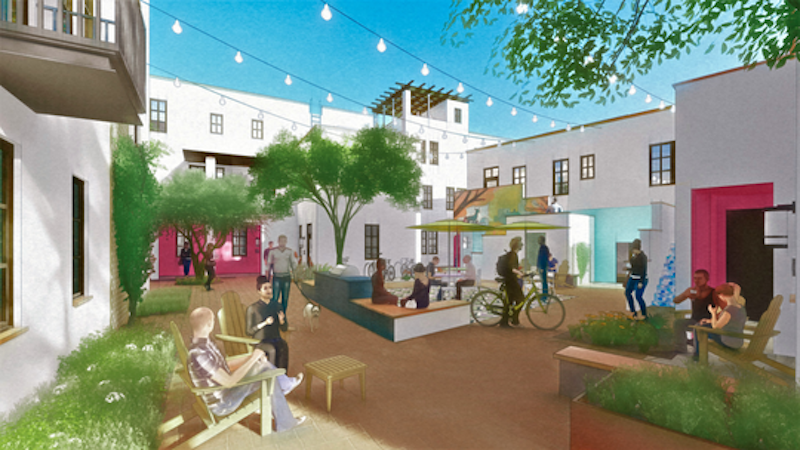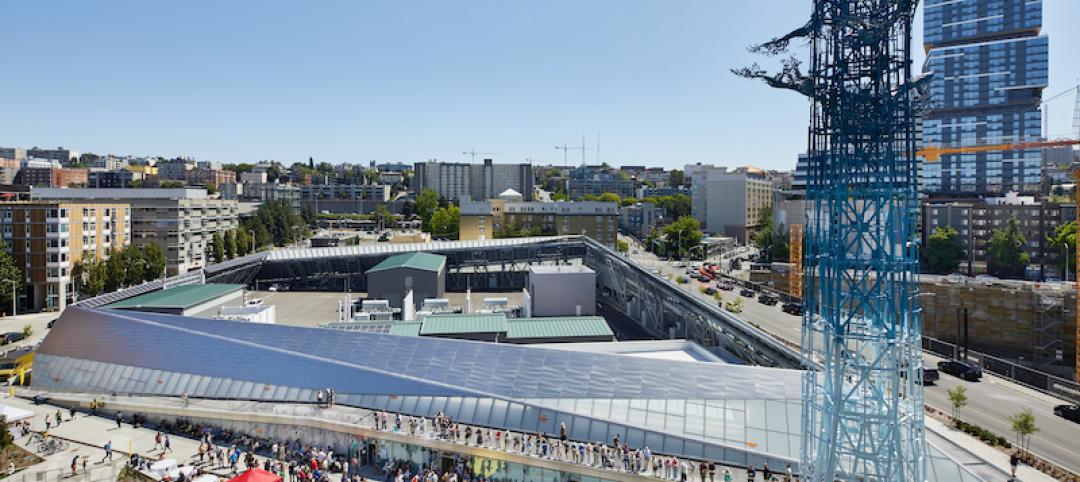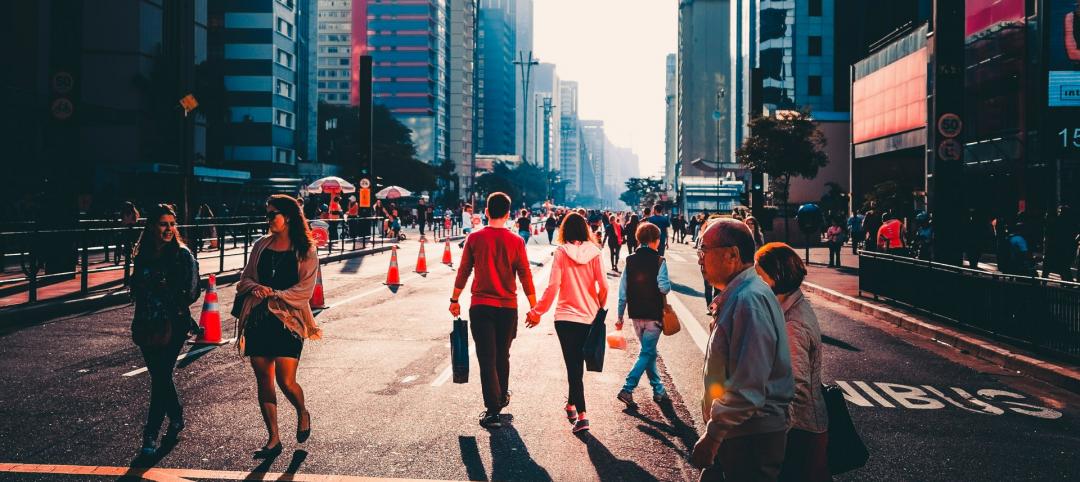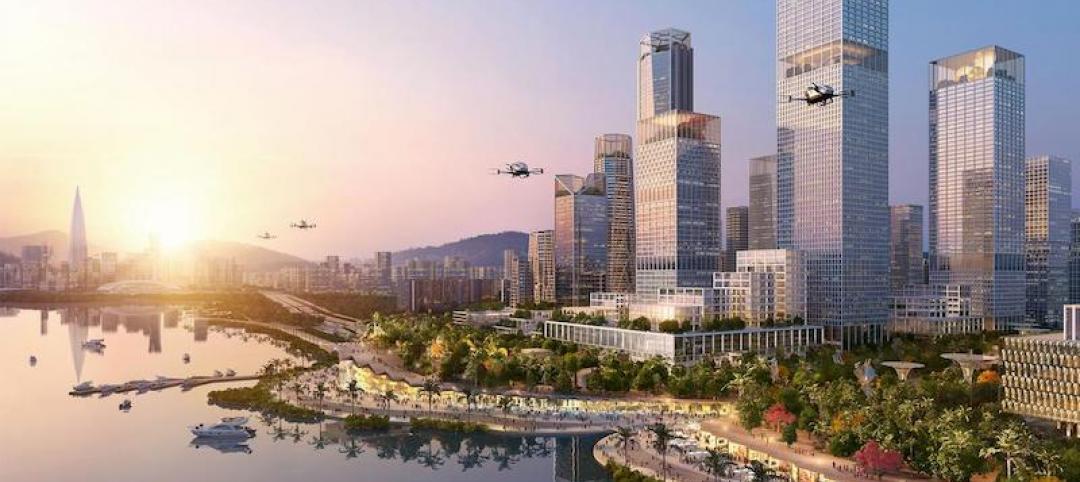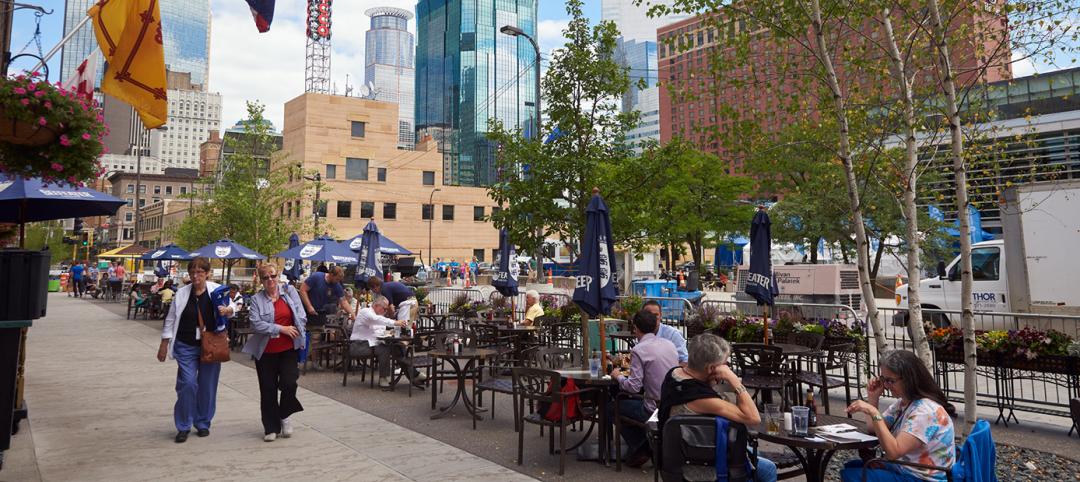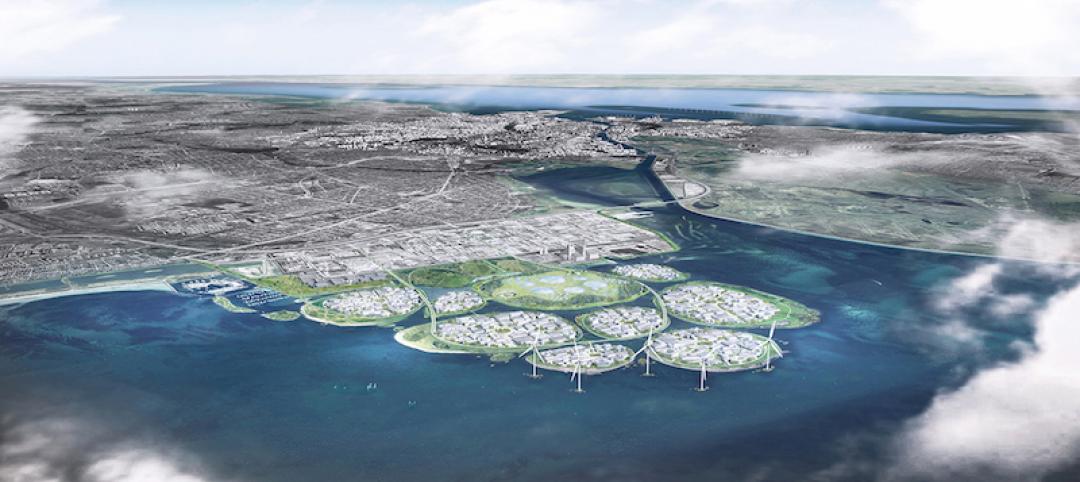Culdesac, a developer that specializes in building car-free neighborhoods from scratch, operates with a key insight in mind: the way we move defines the way we live. And because how we move is changing, thanks to things like ridesharing, the way we live should change as well.
As such, Culdesac Tempe, currently under construction on a 16-acre site in Tempe, Ariz., will be the first car-free neighborhood built from scratch in the United States, according to the developer. The $140 million project will provide 636 apartments for approximately 1,000 residents, with space for zero private cars. That’s right, if you want to live in Culdesac Tempe, you will need to leave your wheels behind. The neighborhood’s one small mini-lot will be stocked with hourly rentable car-sharing, such as GetAround, Turo, or Zipcar, and the perimeter of the neighborhood will be stippled with rideshare pick-up zones.
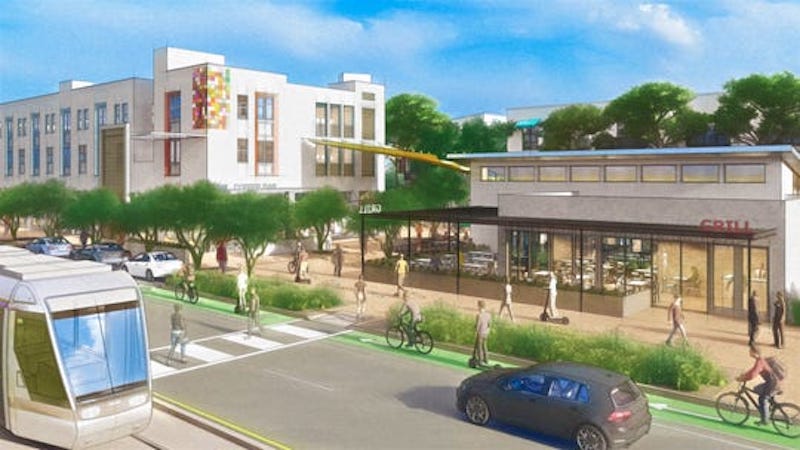
Space that is typically set aside for streets and parking lots will instead be used for acres of greenspace, courtyards, and shops. Not having to create a maze of pavement for vehicles means more than half of the land area will be covered in landscaping and greenery, a ratio not seen in urban developments.
See Also: Redefining lost urban spaces: 5 ways to turn a laneway into a “lanescape”
But Culdesac Tempe doesn’t plan on leaving its residents stranded without any transportation besides their own two feet. The neighborhood will bring together services like ridesharing, shared bikes and electric scooters, same day grocery delivery, and an on-site light rail station that connects to the downtown to mitigate any headaches associated without having a private vehicle. The neighborhood will also feature a pool, a dog park, and a gym.
Another interesting idea Culdesac Tempe will be trying looks to reimagine the guest room. Instead of private guest rooms, which often times aren’t even used, residents will be able to put up friends in bookable guest suites strategically placed throughout the neighborhood.
Culdesac Tempe is slated to launch in late 2020.
Related Stories
Reconstruction & Renovation | Oct 7, 2019
Central Park’s Lasker Rink and Pool to undergo $150 million restoration project
The project will be the largest the Central Park Conservancy has ever undertaken.
Cultural Facilities | Aug 28, 2019
Seattle’s newest substation doubles as a civic amenity
The Denny Substation includes 44,000 sf of open space that invites local residents and visitors to frequent the complex.
Codes and Standards | Aug 27, 2019
Slower speed limits in urban areas offer multiple benefits
Improved safety, better adoption of electric scooters and autonomous vehicles are possible if drivers ease off the accelerator.
Urban Planning | Aug 27, 2019
Pop-up parks revitalize empty lots
Pop-up parks that provide instant open areas for public use and programming can revitalize under-utilized spaces and add vibrancy to neighborhoods.
Urban Planning | Jul 8, 2019
U.S. cities experience ‘Doppler shift’ in walkable urban development
The walkability trend is spreading to urbanizing suburbs.
Urban Planning | May 28, 2019
Henning Larsen wins competition to build Chinese leisure city
5.5 million sf waterfront district to be built in Shenzhen, China.
Urban Planning | Mar 1, 2019
What happens when downtown doesn’t stay downtown? The ripple effects of a strong center city
A new report from the International Downtown Association measures the true value and lasting impact of downtowns and center cities.
Urban Planning | Feb 6, 2019
Svigals + Partners to design a memorial garden for victims of gun violence
The park will be located in New Haven, Conn.
Sustainability | Jan 30, 2019
Denmark to build nine industrial, energy-producing islands surrounded by a ‘nature belt’
The project will be located 10 km (6.2 miles) south of Copenhagen.


